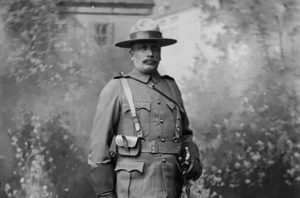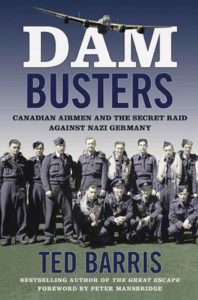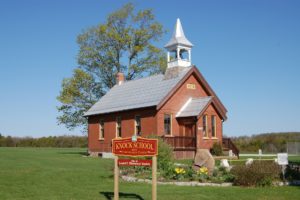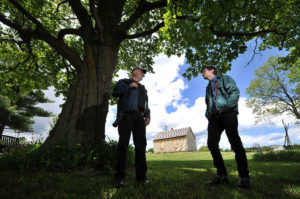 Samuel Benfield Steele was born in the township of Medonte on January 5, 1849. Steele’s father was a former Royal Navy captain. Five of his uncles had served in the military and his father’s uncle had been a veteran of the Seven Years’ War.
Samuel Benfield Steele was born in the township of Medonte on January 5, 1849. Steele’s father was a former Royal Navy captain. Five of his uncles had served in the military and his father’s uncle had been a veteran of the Seven Years’ War.
Steele was educated at home on his family’s estate, then at a private school in Orillia. His father died in 1865, leaving him an orphan at age 16. Following in his family’s strong military tradition, Steele went on to study at the Royal Military College of Canada and joined the militia in 1866. Steele’s first unit was the 35th (Simcoe) Battalion of Infantry. After moving to the Collingwood area to take a clerical job, Steele raised and trained his own company for the 31st (Grey) Battalion.
In 1870, Steele volunteered to join the expedition to put down the Red River Resistance of the Metis led by Louis Riel. In May, he enlisted in the 1st (Ontario) Battalion at Barrie, turning down an offer of a non-commissioned rank to serve as a private. After demonstrating exceptional strength and endurance during the gruelling march from Lake Superior to the Red River, Steele was promoted to corporal.
After the rebellion, Steele studied at the Canadian army artillery school at Fort Henry. He was working as an instructor there when, in the summer of 1873, he learned of a new federal police force. The North West Mounted Police (NWMP, later the RCMP), was about to be created to bring law and order to what is now Western and Northern Canada. Steele immediately applied to the force and became the third officer to be sworn in.
Steele arrived in the West with the first contingent of the NWMP in the fall of 1873. The following summer he was promoted to sergeant. In 1880, at age 31, Steele was promoted to inspector and given his first command at Fort Qu’Appelle, Saskatchewan.
In 1882, Steele was put in charge of policing the construction of the Canadian Pacific Railway, as the line progressed steadily west into British Columbia. In the spring of 1885, Steele singlehandedly dispersed a mob of striking rail workers at Beaver, BC, despite being seriously ill with a fever. As soon as the strike was over, Steele raced east to help put down the North West Resistance of Riel’s Metis.
Upon arriving in Calgary, Steele joined General Strange’s Alberta Field Force and was given command of 25 mounted policemen. After hearing news of the Metis defeat at Batoche and the surrender of Riel’s Cree ally Poundmaker, Strange’s force set out in pursuit of the last remaining rebel group, the Cree band of Chief Big Bear. Steele and his mounted force caught up with Big Bear at Loon Lake, Saskatchewan. In the resulting battle, the last ever fought on Canadian soil, the Cree used up the last of their ammunition and dispersed into the wilderness. Big Bear surrendered to Canadian authorities a month later.
Following the rebellion, Steele returned to regular police duties and enjoyed the least eventful decade of his career. In 1889, he met Marie-Elizabeth de Lotbiniere-Harwood, the 30-year-old daughter of a former MP. She and Steele got married the following January. They eventually had a daughter and two sons.
In 1898, Steele was dispatched to the Yukon to keep order, as thousands of gold-crazed prospectors flooded into the Klondike region. Taking advantage of the absence of any government oversight, Steele imposed strict rules on the prospectors, even deporting suspicious characters and banning those who did not arrive with adequate supplies. Although he certainly did not make many friends among the prospectors, Steele ensured that the Klondike Gold Rush was one of the most orderly of its kind, which in turn brought worldwide fame to the NWMP as the defenders of law and order in the North.
In January 1900, shortly after the start of the South African War, Steele took the command of a cavalry regiment privately raised by CPR tycoon Donald Smith, the Baron Strathcona. By the time Strathcona’s Horse arrived overseas that May, the conventional part of the war had ended and a guerilla war had begun. Steele’s men spent most of their time there searching out elusive Boer commandos.
Shortly after arriving back in Canada in 1901, Steele was offered a divisional command in the South African Constabulary (SAC), and he returned to South Africa that June. As the fighting wound down the SAC steadily shrunk and, by 1906, Steele was making plans to return to Canada. He returned to the Canadian West in 1907 and took up a divisional command in the militia.
When the First World War broke out, the 63-year-old Steele requested active military duty. Initially rejected due to his age, Steele was eventually allowed to command the newly formed 2nd Canadian Division while it trained in Canada, but not while it served overseas. In 1916 Steele was offered to serve as a district commander with the British Army. He was knighted in January 1918 and retired that July.
Steele died in London on January 30, 1919, during the flu pandemic and was later buried in Winnipeg.
By John Merritt, for the Simcoe County Historical Association



